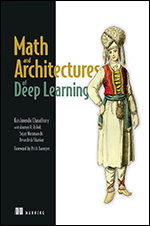Data Structures & Algorithms in Python: Trees & Graphs
Python
| Beginner
- 13 videos | 1h 32m 59s
- Includes Assessment
- Earns a Badge
This 13-video course explores the theory of graph and tree data structures in Python. Learners will examine a specific type of tree: the binary search tree, its structures and properties. You will then observe how to execute common tasks in binary tree; examine the binary search algorithm; and review data structures of linked lists, stacks, and queues. Next, learners will examine how a binary tree structure offers several applications that cannot be done by using stacks or queues. The course demonstrates different depth first traversals, including pre-order, in-order traversals, and post-order traversals. Explore graphs, which are data structures used to model relationships, and different representations of a graph, and learn to model a vertex. Learners continue by observing how to represent an adjacency list as a graph, and examining the adjacency matrix, the adjacency list, and the adjacency set. Then you will explore graph traversal algorithms, including the topological sort. Finally, learn how to traverse through each of the vertices in a graph.
WHAT YOU WILL LEARN
-
Discover the key concepts covered in this courseDescribe how a sorted list of elements can be searched efficiently using a binary searchRecognize what trees and binary trees are and recall the properties of a binary search treeSummarize how insert and lookup operations occur in a bstIdentify the minimum and maximum values in a bst, identify the greatest depth of the data structure, and calculate the sum of values from the root to a leaf nodeRecall the different ways in which to traverse a bst and describe the method to perform a breadth first traversalSummarize the pre-order and in-order depth first traversal techniques for a bst
-
Describe the post-order traversal technique for a bstIdentify the components that make up a graph and recognize the different terms associated with these data structuresRecognize the different ways to represent graphs and describe the structure of an adjacency matrixSummarize the representation of a graph in the form of an adjacency list and adjacency setTraverse over the nodes in a graph using the topological sort algorithmSummarize the properties of a binary search tree and list three different ways in which a graph can be represented
IN THIS COURSE
-
2m 16s
-
6m 6sAfter completing this video, you will be able to describe how a sorted list of elements can be searched efficiently using binary search. FREE ACCESS
-
3. The Binary Search Tree9m 4sAfter completing this video, you will be able to recognize what trees and binary trees are, and recall the properties of a binary search tree. FREE ACCESS
-
4. BST: Insert and Lookup9m 36sIn this video, you will summarize how insert and lookup operations occur in a binary search tree. FREE ACCESS
-
5. BST: Extreme Values, Max Depth, and Sum Path5m 29sIn this video, you will identify the minimum and maximum values in a BST, identify the greatest depth of the data structure, and calculate the sum of values from the root to a leaf node. FREE ACCESS
-
6. BST: Breadth First Traversal10m 51sAfter completing this video, you will be able to recall the different ways to traverse a BST and describe the method to perform a breadth first traversal. FREE ACCESS
-
7. BST: Depth First Traversal - Pre-Order and In-Order7m 58sIn this video, you will learn how to summarize the pre-order and in-order depth first traversal techniques for a binary search tree. FREE ACCESS
-
8. BST: Depth First Traversal - Post-Order3m 31sAfter completing this video, you will be able to describe the post-order traversal technique for a binary search tree. FREE ACCESS
-
9. An Introduction to Graphs9m 36sIn this video, you will identify the components that make up a graph and recognize the different terms associated with these data structures. FREE ACCESS
-
10. Graphs as an Adjacency Matrix6m 48sAfter completing this video, you will be able to recognize the different ways to represent graphs and describe the structure of an adjacency matrix. FREE ACCESS
-
11. Graphs as an Adjacency List and Set8m 11sIn this video, learn how to summarize the representation of a graph in the form of an adjacency list and an adjacency set. FREE ACCESS
-
12. The Topological Sort8m 18sIn this video, find out how to traverse the nodes in a graph using the topological sort algorithm. FREE ACCESS
-
13. Exercise: Trees and Graphs5m 15sDuring this video, you will learn how to summarize the properties of a binary search tree and list three different ways in which a graph can be represented. FREE ACCESS
EARN A DIGITAL BADGE WHEN YOU COMPLETE THIS COURSE
Skillsoft is providing you the opportunity to earn a digital badge upon successful completion on some of our courses, which can be shared on any social network or business platform.
Digital badges are yours to keep, forever.






